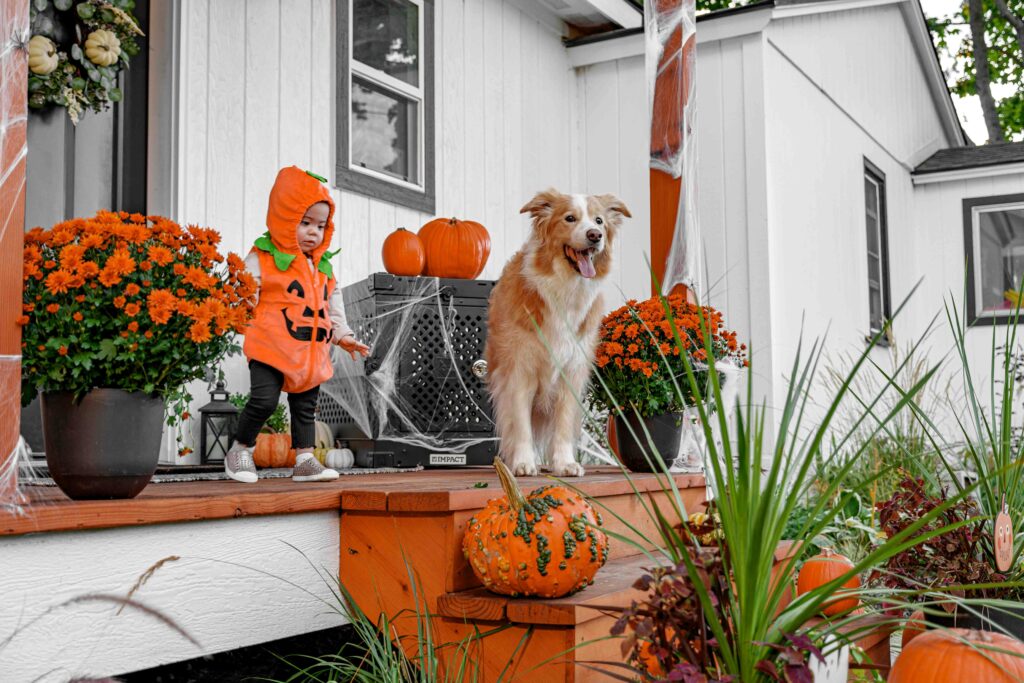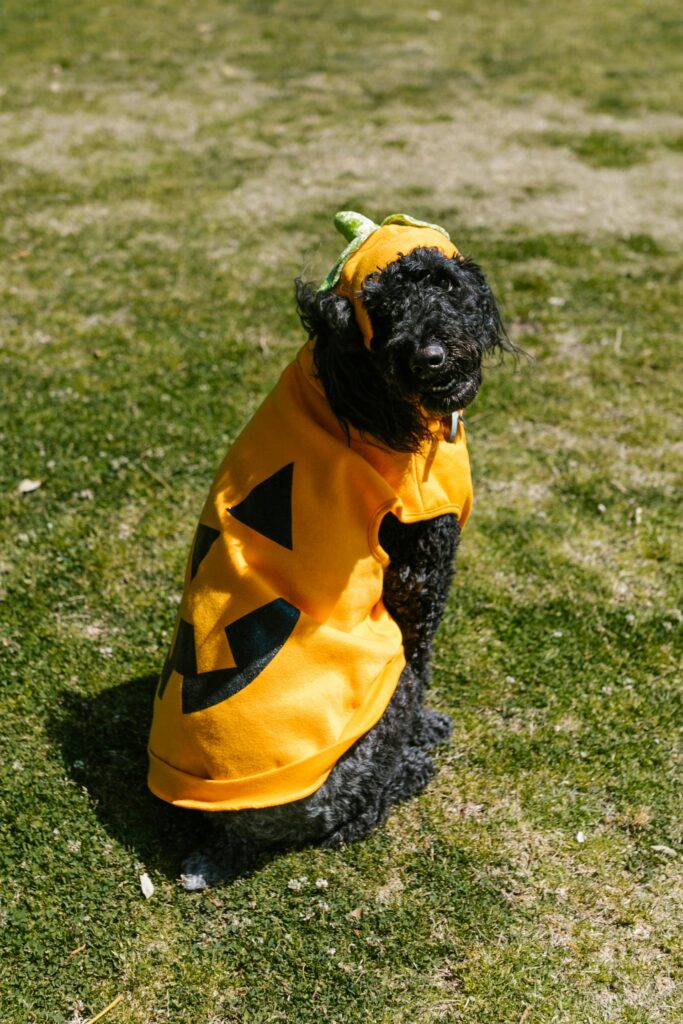Halloween is one of the most exciting nights of the year for families in Columbus, but it can also be one of the most stressful for dogs. The constant doorbell ringing, costumed visitors, unusual decorations, and tempting treats can overwhelm even the most well-trained pup. That’s why it’s important to prepare your dog for the holiday by focusing on safety, structure, and obedience.
With the right approach, you can turn Halloween chaos into a positive training opportunity.
Why Halloween Can Be Stressful for Dogs
For dogs, Halloween combines many of their biggest triggers all in one evening:
- Unfamiliar costumes: Masks, capes, and face paint make it difficult for dogs to recognize people.
- Frequent doorbell rings: Excitement and barking often spike with each new visitor.
- Candy and chocolate: Tempting smells but dangerous for dogs if ingested.
- Loud noises: Fireworks, shouting, or spooky sound effects can trigger anxiety.
Dogs thrive on routine, and Halloween disrupts that routine in a big way. Preparing ahead ensures your dog stays safe and calm.
Costumes: Fun or Frightening?
Dressing your dog up can be adorable, but not all dogs enjoy costumes. Some may feel restricted or stressed.
Tips for Costume Success
- Introduce costumes early: Let your dog sniff and explore before dressing them up.
- Keep it comfortable: Avoid anything that restricts movement or covers the face.
- Do short trials: Have your dog wear the costume for a few minutes at a time and reward calm behavior.
- Never force it: If your dog shows signs of stress, skip the costume and use a festive bandana instead.
Our article on stress-free handling shares helpful strategies for building tolerance to clothing, grooming, and gear.
Candy and Treat Hazards
Halloween candy poses one of the biggest risks. Chocolate, xylitol (found in sugar-free candy), and even raisins can be toxic to dogs.
Tips to keep your dog safe:
- Keep candy bowls and trick-or-treat bags out of reach.
- Teach the “leave it” command and practice it leading up to Halloween.
- Inform kids not to share candy with pets.
- Keep emergency vet numbers handy, just in case.
If you want your dog to join in on the treat fun, prepare dog-safe snacks instead. You’ll find helpful info in our post on summer foods for dogs, which also applies to safe seasonal snacks.
Handling the Doorbell Rush
One of the most stressful parts of Halloween for dogs is the constant stream of visitors. Barking, jumping, or darting out the door can create chaos.
Training solutions:
- Use the “place” command with a bed or mat near the door. Reward calm behavior each time the doorbell rings.
- Practice short role-playing sessions with family members knocking and ringing the bell.
- Keep a leash on your dog during high-traffic trick-or-treat hours for added control.
- Provide a quiet crate or safe room if your dog becomes overwhelmed.
Decorations and Spooky Sounds
Inflatable decorations, flashing lights, and eerie noises may confuse or scare dogs. To prepare:
- Walk your dog past decorations during the day to desensitize them.
- Use positive reinforcement when they approach calmly.
- Play recordings of Halloween sounds at a low volume during training sessions to build tolerance.
Checklist: Halloween Safety for Dogs
- Introduce costumes early and reward calmness.
- Secure candy and teach “leave it.”
- Set up a safe space away from the door.
- Supervise walks closely; watch for dropped candy.
- Keep ID tags updated in case of accidental escapes.
Using Halloween as a Training Opportunity
Halloween chaos can actually be turned into a positive training session. The distractions provide real-world practice for obedience commands:
- Practice “stay” while kids approach in costumes.
- Use “heel” during short evening walks with spooky sights.
- Reinforce neutrality when the doorbell rings.
This type of training mirrors the benefits of structured outings and builds stronger focus under pressure. It ties in perfectly with our Basic Obedience Program, which teaches dogs to remain reliable in distracting environments.
For extra seasonal safety tips, check out the ASPCA’s Halloween safety guide.
FAQ: Halloween and Dogs
Q: Should I take my dog trick-or-treating?
If your dog enjoys walks and is comfortable with costumes and crowds, short outings may work. But if they show stress, it’s better to keep them at home.
Q: Can my dog eat pumpkin from decorations?
Plain pumpkin is safe in moderation, but avoid painted, carved, or spoiled pumpkins.
Q: What if my dog gets anxious with costumes?
Skip dressing them up and opt for a festive collar or bandana instead. For fearful dogs, structured desensitization helps.
Q: How can I keep my dog calm indoors?
Exercise them earlier in the day, provide a long-lasting chew, and set up a quiet, safe space.
Final Thoughts
Halloween can be a fun experience for the whole family, but it requires preparation when you have a dog. From costumes to candy and chaotic doorbells, your pup will face plenty of new challenges. By reinforcing training, creating safe spaces, and planning ahead, you can make Halloween less stressful and even use it as a training opportunity.
If your dog struggles with reactivity, excitement, or stress during holidays, our Columbus team can help. Schedule a consultation through our contact page and let us prepare your dog for calm, confident behavior year-round.


